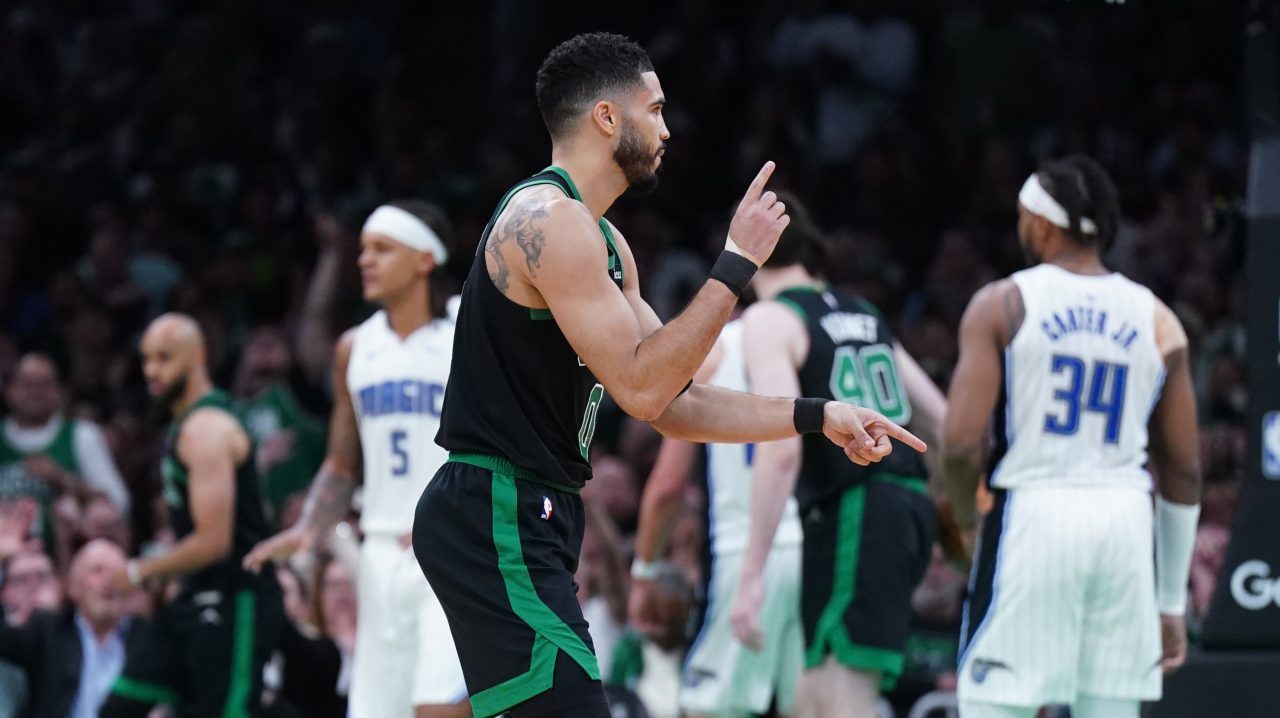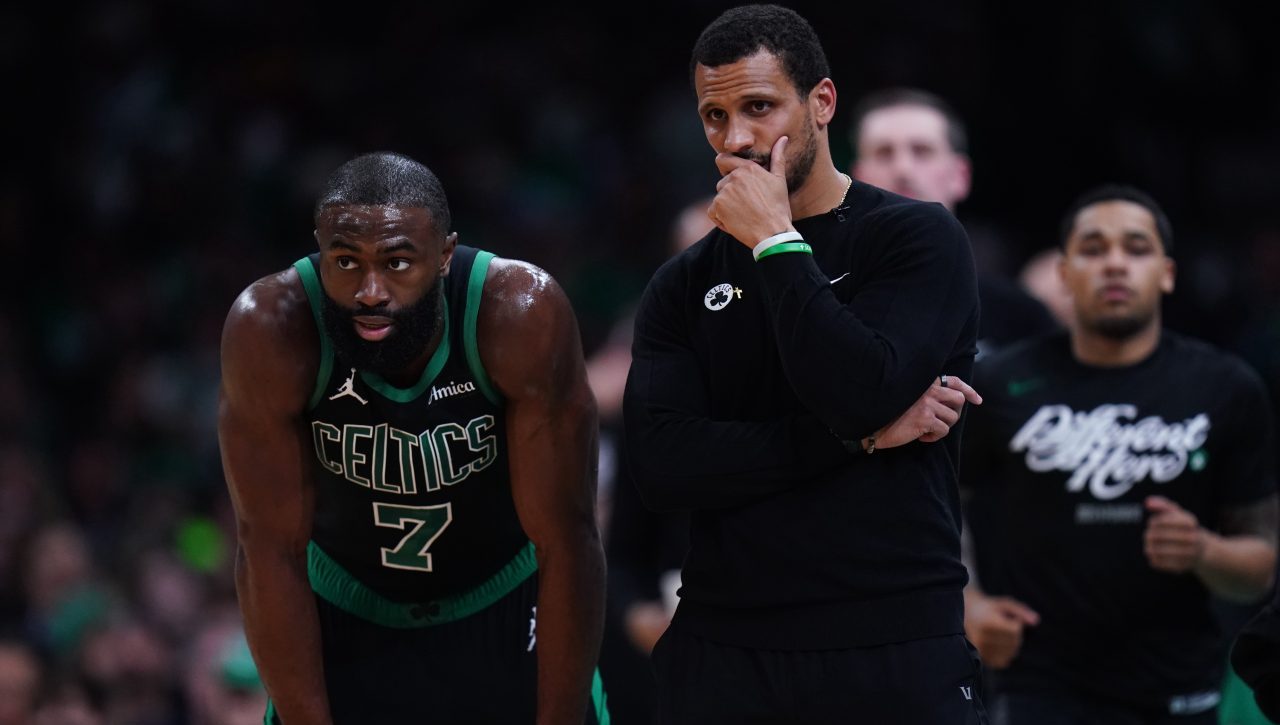MILWAUKEE -- Marcus Morris stood before the media throng following Boston’s 123-101 Game 2 loss, taking any and all questions with little to no emotion shown during or after his answers.
It became clear from the jump that Morris credited the Bucks for playing well enough to win, a victory fueled in large part by their ability to knock down a bunch of shots.
“They shot a lot of threes, made a lot of threes. Kudos to them,” Morris said.
His demeanor was balanced between the disappointment of the loss, but aware of the reality of the situation, which was the Celtics leaving the floor after Game 2 having already stolen home-court advantage by virtue of winning Game 1.
Boston has a greater control of the series, no doubt.
But putting the Bucks away, even now with the advantage of having the home-court edge, won’t be easy.
Easier said than done, of course.
Boston Celtics
Find the latest Boston Celtics news, highlights, analysis and more with NBC Sports Boston.
Especially when talking about a Milwaukee team that won both of its road games in its first-round matchup with Detroit, and came into the playoffs with the the best road record (27-14) in the NBA.
But the Celtics are a different team — a much better team — than the Pistons, whose best player, Blake Griffin, was a shell of himself due to injuries.
And Boston has shown itself to be a much-improved team at the TD Garden in the playoffs, winning both of its home games as part of a four-game sweep of the Indiana Pacers in the first round,
“It’s on us now,” Boston’s Terry Rozier told NBC Sports Boston. “We’re coming home and now, we need to take care of our business and it starts with Game 3.”
Here’s a look at five takeaways from Game 2 that Boston would be wise to try and build upon heading into their Game 3 tilt against Milwaukee.
KYRIE IRVING
It was as bad a night shooting as we’ve ever seen from Kyrie Irving, who had just nine points on a dismal 4-for-18 shooting.
But Irving is an elite scorer, and players like that know how to handle nights like Game 2 one way … keep shooting.
And Irving will, of course.
And Celtics fans, you can expect he’ll make a ton more shots if he gets those same looks in Game 3.
Credit the Bucks for doing a lot more double-teaming and in effect, getting the ball out of Irving’s hands before he could go into his bag of basketball wizardry.
But here’s the thing: As good as the Bucks defense was against Irving — and they were good — the six-time All-Star still got good looks, a lot of good looks, at the rim.
Second Spectrum data shows that of Irving’s 18 field goal attempts, 10 of them were uncontested.
And of those 10 uncontested, Irving made just one of them.
Call this the luke-warmest hot take of hot takes, but I’m going to double down on Irving connecting on a lot more of his uncontested shot attempts in Game 3 than we saw in Game 2.
And the reason is simple.
Because Irving has been too good for too long to have multiple nights, particularly in the playoffs, when he doesn’t do the most basic thing that all great scorers do: Make the open ones.
HORFORD’S DEFENSE DOES NOT REST
While it may have seemed as though Giannis Antetoukounmpo was better in Game 2, his numbers were pretty much the same as they were in Game 1.
So the idea of continuing to have Al Horford as the primary defender on him, has to remain in effect if you are the Celtics.
Horford defended Antetokounmpo for a team-high 29 possessions.
What I liked most about that is how Horford made Antetokounmpo a 3-point shooter.
He made a trio of them in Game 2, which was unusual, but if you are Horford and the Celtics, you’ll live with him making that shot.
Because Boston knows with Horford on the scene, most of the shots Antetokounmpo takes will be contested. And in this series, Second Spectrum data shows Antetokounmpo shooting 7-for-22 (31.8 percent) in the first two games when taking a contested shot.
Boston will certainly look to tweak a few things in its defensive coverages, no doubt. But the game plan that includes Horford being the primary defender against Antetokounmpo for most of the game is the Celtics’ best path towards keeping him from carrying the Bucks to victory.
MARCUS MORRIS
As I told my NBC Sports colleagues Abby Chin and Chris Forsberg prior to Game 2, “Playoff Mook” has arrived!
He then went out and scored a team-high 17 points on 6-for-8 shooting, the kind of ridiculously efficient shooting numbers we saw from him what seemed at least once or twice a week prior to the All-Star break.
His scoring in Game 2 isn’t necessarily what Boston needs to latch on to and hope to bottle up for Game 3.
Morris’ greatest ability in that game — and most games for the Celtics — is his availability, which the Celtics have been able to capitalize on in both road games.
He’s averaging 13 points in the two games while shooting an impressive 71.4 percent from the field, with most of the shots being jumpers.
Boston needs to continue to find him and make the Bucks pay if they continue to leave him open.
Of Morris’ 14 shot attempts in the first two games, 11 were uncontested attempts of which he made eight for an impressive 72.7 percent shooting percentage.
Solid defense, contributor on the boards and open-shot maker.
That’s exactly what you want from “Playoff Mook” going into Game 3.
SPLAT MOUNTAIN
Brook Lopez has hit a ton of 3’s this year from the center position, leading to the “Splash Mountain” nickname.
But in this series he has been more like “Splat Mountain” based upon how he has struggled to make shots.
In the first two games of this series, Lopez has averaged 6.5 points on 4-for-15 shooting (26.7 percent) from the field, and 4-for-12 (33.3 percent) from 3-point range.
Here’s the problem, though.
Lopez has made little to no effort to establish a post-presence in this series, which has been a good thing for Boston because with a smaller lineup that often has 6-foot-8 Marcus Morris defending the 7-footer, Boston hasn’t been hurt much at all by the presence of Lopez.
Similar to Mirotic, if Lopez isn’t knocking down 3’s, he’s not giving the Bucks much when he’s on the floor.
HOME, SWEET HOME
While you don’t want to make too big a deal about being home and having home-court advantage, it’s a pretty big deal when you look at the Boston Celtics the last couple of years.
This is essentially the same team we saw in the playoffs a year ago, only deeper with the return of Kyrie Irving and Gordon Hayward.
So in looking at what this team has done in the playoffs, it’s only fair to view it from the lens of both this season and last season.
And as much as the Celtics have been all over the map when it comes to winning, playing in front of their fans at the TD Garden has been a really good thing.
Beginning with last season’s postseason run, the Celtics are an impressive 16-9 in the playoffs overall.
At home in the postseason, Boston has been nearly impossible to beat, which is clear by a 12-1 record at home in the playoffs over the last two seasons, which includes winning both of its home games against the Indiana Pacers as part of Boston’s four-game first-round sweep.
That lone loss at home for Boston came against LeBron James and the Cleveland Cavaliers in Game 7 of the Eastern Conference Finals last year.
That’s why getting a split in Milwaukee was such a big deal for the Celtics even as they try and downplay its importance.
They have shown a level of home-court dominance with this current group, which bodes well for their chances of moving on from one round to the next.
And that is what this is all about.
Survive. Move on.
Rinse. Recycle. Repeat.
Click here to download the new MyTeams App by NBC Sports! Receive comprehensive coverage of your teams and stream the Celtics easily on your device.







